Are Prenatal Vitamins Even Necessary?
Dr. Hopkins began his research by helping me answer this fundamental question about the best prenatal vitamins: do we need to be taking prenatal at all?
Indeed, it seems that we do.
There is widespread consensus that the most essential prenatal nutrients are:
- Folate–for neural tube closure.
- Calcium–for bone development.
- Iron–for oxygenation of blood.
- Vitamin D–for healthy bones, teeth, skin, and vision.
In addition, there is emerging data to support a growing list of other nutrients that are also particularly important during gestation. These include choline, omega-3 fatty acids, and vitamin A.
You can learn more about all of these nutrients, and whether or not you may be deficient in some of them, in this post.
(You can of course find plenty of data to support the importance of ALL essential nutrients during pregnancy. Our goal with this guide was to identify the most important items to supplement during the fetal development period.)
Safety First, Obviously
While the necessity of certain prenatal nutrients is undeniable, a valid question remains: is it safe to take prenatal vitamins? The good news is, studies show their safety and benefits for most pregnant women.
Remember, moderation is key when it comes to supplements. It’s important not to overdo it with any nutrient, as there can be negative effects. For example, excessive iron intake can result in constipation. That’s why it’s essential to choose the right prenatal vitamin tailored to your specific requirements.
Can You Get All Pregnancy Nutrients from Food?
This will come as a surprise to no one, but the best way to receive our nutrients is from food. Even the best natural prenatal vitamins should not be viewed as a replacement for a healthy pregnancy diet.
Women should familiarize themselves with which foods are the best sources of the essential nutrients that are most important during pregnancy. Again, you can do that here.
Importantly, the recommended daily intake of several vitamins and minerals is elevated for pregnant and lactating women. Even with a well-balanced, nutrient-rich diet, it can be difficult for some women to meet optimal levels.
For that reason, I am on board with taking a prenatal supplement while trying to conceive and during pregnancy and lactation. (Here is more on multivitamins in general.)
Note that the FDA’s guidelines for recommended daily allowances (RDA) tend to focus on the minimum dose necessary to avoid health complications. There is strong evidence that for several nutrients, much higher doses than the RDA values are beneficial to pregnant women. Therefore, you’ll notice that some nutrients in some of the brands we recommend exceed the RDA by a fair bit.
Should You Take a Supplement While Breastfeeding?
There are sometimes significant differences in nutritional guidelines between gestating and lactating women. For instance, non-pregnant women need 18 milligrams of iron per day. For pregnant women, that goes up by 50% (27 milligrams), and for lactating women it goes down by 50% (10 milligrams).
These are significant differences, so it’s worth familiarizing yourself with the recommended daily allowances for all of life’s stages. Pro tip: Needed makes a nice supplement for lactating women. (discount code: GIMME20)
How to Choose the Best Prenatal Vitamin
Okay, so you know you want to take a prenatal supplement. Now, how do you choose which one? Dr. Hopkins recommended the following five steps. Luckily, you can ignore this because he cuts to the chase and recommends five specific brands, below, under The Best Stuff.
If you want to figure out the best brand for yourself, you should:
- Assess your own eating habits to determine specific areas where a supplement will be beneficial.
- Consider the source material of the vitamin you’re going to buy, as well as the combination of nutrients in your supplement. Nutrient interactions can influence the bio-availability of the ingredients in your prenatal.
- Confirm that the prenatal brand you’re considering has been tested by a third-party lab to confirm purity and a match between what’s listed on the label and what’s in the capsule. Unfortunately, this is not something you can take for granted.
- Check for fillers or other “sneaky stuff” that may actually have a negative impact on your or your baby’s health.
- Make sure that your chosen prenatal doesn’t contain nutrients in quantities large enough to pose toxicity risks.
This list is super overwhelming to me, so Dr. Hopkins and I came up with specific criteria, questions to ask manufacturers, and an organized vetting process to identify the best prenatal vitamins.
What to Look for in Prenatal Vitamins
Here are the primary nine factors we considered when reviewing popular prenatal vitamin brands.
1) Food-Based Vs. Synthetic Vitamins
Let’s get something out of the way: there are no truly food-based prenatal supplements on the market. But you’ll see brands like Actif organic prenatal vitamins that claim 100% non-synthetic ingredients.
These innovative brands are paving the way for a closer-than-ever blend of nature and scientific precision. But for the majority of prenatal vitamins, we need to address the reality of what “food-based” vs. synthetic means.
By definition, a whole food supplement, like mykind organic prenatal vitamins consists of the food source itself that has been concentrated into a powder (via dehydration). The volume needed for a proper condensed food powder would be more than you could ever pack into pills, so the only way to get a truly “food-based” supplement would be by swallowing an entire capsule (or multiple capsules) for a single nutrient.
Because of this, every prenatal vitamin system (even the ones with 10 pills per day!) contains synthetic nutrients. Sometimes the capsule will ALSO contain some amount of dehydrated food-based powder, but this does not make it “food-based,” in our opinion.
Instead of calling any vitamin brand “whole food,” we can only indicate whether the tablets/capsules contain an added food blend or not. As you’ll see below, whole-food powder is typically just a small fraction of the total content and is not the primary source of the vitamins on the label.
There are three primary ways that essential nutrients are sourced for vitamin capsules or pills (and in practice, the first two are really the same):
- Synthetic USP1 (United States Pharmacopeial Convention ) vitamins. These are the FDA-approved standards and what take up most of the space on the ingredient labels of vitamin jars, even those brands marketed as “food-based” or “whole food.” These can be “nature-identical,” meaning the chemical structure and shape are indistinguishable from the food nutrient. (This is true, for example, with ascorbic acid as vitamin C.)
However, these synthetics can also be merely chemically similar to the food version, which may alter the way enzymes in our bodies interact with them. This is why we sometimes make recommendations on synthetic versus naturally occurring vitamins. For instance, vitamin E as d-alpha tocopherol is the natural, safer version, and the synthetic version–dl-alpha tocopherol–should be avoided.
- Isolates from naturally occurring sources. These are isolated down to their pure chemical structure and do not contain the matrix of other compounds that you would get from any actual food source. Isolates undergo significant processing using various solvents and chemical excipients.
Both synthetic and naturally-derived isolates can have different final versions, based on the process used to isolate or synthesize the vitamins. Some forms may be more bioavailable or more gentle on your stomach than others. Many vitamins are purposefully combined with some other compound (salts, methyl groups, chelation, etc.) to make the nutrient more readily absorbed or less likely to cause digestive issues.
Our recommendations have less to do with whether a vitamin is synthetic or natural, and more to do with what other compound has been paired with the vitamin isolate. For example, methylated folate (and other B vitamins) or minerals like iron and zinc should be bound to organic compounds (chelated) to aid with absorption.
- Fermentation in yeast. When isolated vitamins (synthetic or natural) are cultured in a yeast broth, the yeast will metabolize and break down certain components of the chemical structure. While we feel it’s somewhat Sneaky for brands to culture isolates in yeast and then advertise them as “whole foods,” yeast fermentation is a valid technique for making the pure isolates more bioavailable.
That said, Dr. Hopkins couldn’t find primary science to clearly demonstrate the efficacy of this process. As a result, we don’t use yeast fermentation as a Good Stuff inclusion criterion, but we do count this as a bonus when evaluating vitamins. (Please note that fermenting vitamins in yeast does not produce probiotics.)
2) Inclusion of Lesser-Known Important Nutrients
At the beginning of this post, we mentioned seven nutrients that are critical for a healthy pregnancy. These are what you’ll find in safe prenatal vitamins.
Keep in mind, though, that some of these nutrients are really easy to get from food. And some are better absorbed when combined with other specific nutrients (more on this in a minute). We took all of this into account when reading the labels of some of the most popular prenatal vitamins on the market.
Broccoli is rich in choline.
For instance, choline, which supports healthy brain and spinal cord development, is actually very important during pregnancy but not found in many prenatal vitamins. (Gestational supplementation of choline has been linked with decreased risk of neural tube closure pathology and improved cognitive function in babies.)
Given the high rates of choline deficiency in the U.S., we gave bonus points to the brands of prenatals that included a food-based version of this nutrient.
3) Vitamin D2 Vs. D3
Vitamin D2 (ergocalciferol) is plant-derived and D3 (cholecalciferol) is typically animal-derived. Recently, D3 that is derived from lichen has become a popular vegan version of the “better” vitamin D. (It’s worth noting that sourcing D3 from lichen is controversial– it’s super slow-growing and harvested from the wild, which disrupts the local ecosystem.)
Studies have shown that D3 supplementation is more effective at raising vitamin D blood levels than D2. However, our skin produces D3 in the sun, so if you have regular access to sunshine, this is probably not such a big deal.
If you are not vegetarian, you should try to find a supplement with D3 rather than D2. If you are vegetarian, try to make sure you get some sunshine, or look for a vitamin with lichen-derived vitamin D3.
4) Interactions Between Essential Nutrients
Many different factors influence bioavailability, which refers to how much of a given nutrient is actually absorbed and metabolized by our bodies.
Determining bioavailability is complicated. The source of the nutrient, how it is cooked or prepared, and the other foods or nutrients that are consumed at the same time all influence bioavailability.
It’s impossible to predict the ways that different foods in different combinations will interact to affect the bioavailability of one nutrient versus another. This is just another reminder to get nutrients from food as much as you can!
There are a few combos of nutrients that deserve special attention.
Iron & Calcium
Calcium inhibits the absorption of iron, and both are important essential nutrients for pregnant women. For that reason, many prenatal vitamins contain very little calcium.
The strategy we recommend is to find a prenatal supplement high in iron and try to avoid eating a calcium-rich meal (i.e. high in dairy) when you take the prenatal. Instead, eat calcium-rich foods a few hours apart from when you take your prenatal.
Iron & Vitamin C
The type of iron (non-heme) that you get from supplements and fortified foods should be taken with vitamin C when possible.
Vitamin C helps aid the absorption of non-heme iron, so you can also aim to consume vitamin C-rich foods with your prenatal. (You can read a bit more about iron below under “Possible Nutrient Toxicity Risks.”)
Vitamin D & Calcium
Vitamin D is essential for the absorption of calcium. You can help ensure that you’re getting enough calcium by consuming calcium-rich foods with foods high in vitamin D, such as egg yolks and fortified milk.
If you are vegan you may consider taking a calcium supplement during pregnancy. While there are several different forms/sources of calcium such as calcium carbonate and calcium citrate, it appears that all of these are absorbed equally by the body.
Keep in mind that the amount of calcium your body absorbs is inversely correlated with the amount of calcium ingested (above 500 milligrams). For instance, it’s better to take two 500 milligrams doses of calcium twice a day than one 1,000 milligram dose.
5) Enteric Coating
Stomach acid can affect bioavailability by breaking down nutrients in supplements before they arrive in the intestines where they can be absorbed.
Supplement tablets can be coated with enteric polymers to increase the bioavailability of nutrients. The coating won’t dissolve at the very low pH levels found in the stomach, and instead dissolve once the pH becomes more neutral.
Unfortunately, enteric coating can be made from methacrylic acid copolymer, which is absolutely not “Good Stuff,” but it can also be made from a plant-derived cellulose coating derived from algae.
Still, if you have a sensitive stomach you may want to look for a prenatal with a plant-cellulose enteric coating.
6) Third-Party Testing
You’ll want to make sure that whatever prenatal vitamin you choose is third-party tested.
This is not the same as having “seal-of-approval” labels—even if these are from the NIH, or they proclaim that a supplement is “non-GMO verified.”
True third-party testing means that a laboratory measures the actual contents of the formula against the label claim to see if they match. They also should be testing for contaminants such as heavy metals, pesticides, and solvents. This commitment to purity is crucial when choosing the best non-toxic prenatal vitamins for your and your baby’s well-being.
Here is an example. When it comes to folate, the amount in the pill is often more than the claim on the label. This matters because folic acid has about 70% higher absorption rating than food-based folate or methylfolate. This means that a folic acid content of 800 micrograms is actually the equivalent of 1360 micrograms of folate—not to mention whatever you’re getting from your diet.
To further complicate matters, you really can’t trust a lot of information on websites that have ranked prenatals because often these websites are using outdated or misinformation.
For example, we found that Reviews.com has a lot of misinformation about which prenatals have been third-party tested. After doing some fact-checking, we found that several vitamins that were listed as having not been third-party tested actually were tested. Perhaps this is because the information on Reviews.com was outdated, or perhaps it was just wrong.
Either way, you can’t simply trust what you see posted online in the vast and complicated world of prenatal supplements!
The best prenatal vitamin brands will be those that have been third-party tested. Once you decide on a particular brand, you should double-check to ensure that the formulation you are buying–and not some previous recipe–was tested.
7) Inclusion of Questionable Ingredients (Sneaky Stuff)
Ideally, you’ll avoid any prenatal that contains food colorings, fillers, and additives.
According to a LabDoor report, four of twenty-two products contained at least one artificial coloring agent (Blue 2, Yellow 6, and/or Red 40).
Other “watchlist” or questionable ingredients identified by LabDoor are:
- Cornstarch
- Polyethylene
- Glycol
- Polyvinyl alcohol
- Sodium benzoate
- Sodium selenate
- Sucrose and corn syrup solids
- Carmine
- Caramel color
- Titanium dioxide
- Butylated hydroxytoluene
- Benzoic acid
Magnesium stearate is a common anti-caking additive. It’s not a dealbreaker; it gets an EWG Skindeep score of just 1 and is generally considered harmless. Still, the inclusion of this ingredient is purely for manufacturing purposes as it possesses no nutritional value. Moreover, when you see magnesium stearate on the label, it’s usually not alone (there’s normally at least one other filler or preservative).
8) Possible Nutrient Toxicity Risks
It’s important to know the amount of a given nutrient that your body actually needs will also determine how much is absorbed. Fortunately, for most nutrients, any excess that is not needed by the body will be excreted in the urine.
But there’s a caveat, and to understand it you need to understand the difference between fat-soluble and water-soluble vitamins. Here goes.
Just as the name implies, water-soluble vitamins dissolve in water. This makes them more readily available for use in various tissues and also easily excreted when there are excess amounts in the body.
Vitamins in the B-complex and vitamin C are water-soluble. Although it is possible that ingesting these vitamins in excessive amounts for prolonged periods of time can cause some gastrointestinal discomfort, there is very little real risk of “vitamin overdose” (hypervitaminosis).
Fat-soluble vitamins, on the other hand, are dissolved in lipids which enter through the small intestine and are generally stored for later use.
Because they are stored in tissue, fat-soluble vitamins are not as easily excreted, and prolonged excessive intake can lead to hypervitaminosis.
The fat-soluble vitamins include A, D, E, and K. Dr. Hopkins feels that it is basically impossible to overdose on any of these vitamins from your diet. Only ingesting excess vitamins in the form of supplements can pose any vitamin toxicity risks.
A few nutrients do merit mention when it comes to potential toxicity:
Preformed Vitamin A
Two forms of vitamin A are available in our diet:
- Preformed vitamin A (retinol and retinyl ester) comes from animal sources.
- Provitamin A carotenoids (beta-carotene being the most important) are plant-derived.
Preformed vitamin A (retinol) can build up in the liver and become toxic at high doses. This condition is called hypervitaminosis A.
The important point here is that the toxic effects of vitamin A are only associated with animal-derived and synthetic retinol. Neither plant-derived nor synthetic beta-carotene poses any risk. So, don’t worry about vitamin A toxicity from beta-carotene, even if it’s synthetic. Do worry about excessive vitamin A intake from supplements that contain synthetic retinol.
We can’t recommend steering clear of all synthetic vitamin A because some percentage of the population has a genetic polymorphism that prevents them from being able to convert beta- carotene to its active form. Therefore, the best prenatal vitamins usually have a mix of synthetic and natural vitamin A in order to cover everyone.
Readers of this website are very unlikely to be vitamin A deficient. Still, the right supplemental vitamin A can provide peace of mind without risking hypervitaminosis.
Dr. Hopkins feels that the ideal prenatal supplement will contain a mixture of beta-carotene and retinol (retinyl palmitate). We gave brands a bonus for being food-derived and not synthetic.
Synthetic Vitamin E
Naturally occurring vitamin E consists of eight related compounds. The most important of these is alpha-tocopheryl, usually listed as d-alpha tocopheryl on a supplement label. (The synthetic isolate will begin with “dl” instead of “d.”)
Many websites reference the “problematic” and “potentially toxic” concerns about synthetic vitamin E. After doing some digging, we concluded that the only clear problem with synthetic vitamin E is that it is not absorbed well (less than 50%).
There does not appear to be evidence that excessive vitamin E poses any health risks when obtained through food. However, supplemental vitamin E can have toxic effects—like increased risk of hemorrhagic stroke and congenital heart defects in newborns—-at very high doses.
Unlike other vitamins, this toxicity risk appears to hold true whether the dose is natural or synthetic, but only from supplementation (not from food).
Iron
Eggs are high in iron.
Iron needs to double when pregnant, and supplementation is sometimes needed for vegetarian women in particular.
Iron overdose is a significant concern for young children, but you’re more likely to struggle with anemia during your pregnancy than with excessive iron intake.
Folate/Folic Acid
Avocados are a good source of folate.
In view of the link between folate intake and fetal neural tube defects, all women capable of becoming pregnant should consume folate. Most experts agree that supplements or fortified foods so be consumed in addition to the intake of folate from a varied diet.
Folate is a naturally occurring nutrient found in food, and folic acid is a form of synthetic folate.
Having the MTHFR gene mutation inhibits the way your body processes folic acid, and therefore anyone who knows they have this mutation should look for supplementation with methylated folate, a more bio-available form.
Despite several websites warning about the risks of excessive folate intake, there is actually no upper limit for food-derived folate. The upper limit of folic acid, which is synthetic folate, is 1,000 micrograms per day.
Note that there is a risk of excess folate masking a B12 deficiency. This can happen because the folate supplement will prevent the symptoms of anemia that are associated with deficiency of either B12 or folate; it will not prevent the progression of neurological damage that accompanies B12 deficiency.
The bottom line here is that the best prenatal vitamins will have methylated folate, rather than folic acid. If a supplement does contain folic acid, there is no reason for it to ever be higher than 600 micrograms.
Please note: Navigating this topic can be complex, and we at Gimme the Good Stuff are not medical professionals. We encourage you to explore this further if it concerns you, and we provide additional resources like this guide from Dr. Lipman for deeper understanding.
It’s always best to talk to your doctor about personalized health choices, especially during pregnancy. Working with your healthcare provider can help you make sure you’re getting the right nutrients for both you and your baby.
9) Omega Fatty Acids
Pregnant women should aim for two servings of seafood per week.
You’ve probably heard a lot of buzz about how crucial omega-3s are for the optimal development of a fetus.
While omega-6 fatty acids are abundant and readily available, omega-3 fatty acids make up a much lower proportion of the modern American diet.
Because omega-3 and -6 fatty acids are essential nutrients (cannot be synthesized by the body), they must be consumed in the diet. This means they are transferred via the placenta from the mother to the fetus.
There is a general consensus among medical professionals that pregnant women in the United States and Canada do not get enough omega-3 fatty acids, specifically DHA. Both the EPA and The ACOG recommend that pregnant women consume twelve ounces (340 grams) of seafood per week from low-mercury species.
The recommended two servings of marine food per week will provide an average intake per day of 100 to 250 milligrams total of omega-3 fatty acids. Of that, 50 to 100 milligrams will be of DHA. For women following this recommendation, the remaining 200 to 250 milligrams of recommended DHA will have to come in supplement form.
This study suggests that omega-3 supplementation during pregnancy significantly reduces the risk of premature birth. We feel that in addition to eating low-mercury fish when pregnant, it makes sense to take a fish oil supplement.
Omega fatty acids (like DHA) generally cannot be combined in the same pill as a prenatal because the oil will turn rancid if it’s exposed to minerals. Ritual is one of the only companies that combines the DHA into its multi; they have a separate capsule-inside-a-capsule design to hold these ingredients apart from one another.
Ranking the Best Prenatal Vitamins
Once we decided what we wanted to find in prenatals, the next step was looking at the options available and categorizing them into Best, Good, Okay, Bad, or Sneaky Stuff.
In terms of which is the best vitamin for YOU, some of that depends on your lifestyle and circumstances—you’ll see that, for example, a few of them are vegan, and the amounts of iron differ significantly. (See below for a helpful cheat sheet.)
To make our Best Stuff category, a vitamin brand needed to:
- Provide third-party lab Certificate of Analysis (COA) that confirms both the absence of contaminants and a validation of the ingredients listed on the label.
- Contain methylated folate and choline.
- Contain the natural version of vitamin E.
- Contain D3, derived from either lichen or lanolin.
- Contain natural B12 as methylcobalamin, with or without adenosylcobalamin.
- Be organic, if it includes a food blend.
- Be free of preservatives, additives, colors, and fillers.
Below is a handy cheat sheet of our top five brands. Here you’ll see how they differ so that you can choose the best prenatal vitamin for your needs.
Under the Good Stuff heading, you’ll find those brands that didn’t quite make Best Stuff criteria. We still really like these brands, either because I’ve gotten to know them throughout my years in this space, or because Dr. Hopkins thought there was something extra special about them.
The Okay Stuff includes brands that we’d feel fine taking ourselves but have additives that aren’t necessary.
Finally, the brands listed below under Bad Stuff or Sneaky Stuff are the ones that do not perform any third-party testing and contain ingredients we think are flat-out not safe.
Prenatal Vitamin Brands We Cannot Rank
Unfortunately, there are a bunch of brands that we cannot include in our ranking below. These vitamin companies were either unresponsive to our inquiries or failed to provide COA proving their purity and/or validation of ingredients.
This doesn’t mean these brands are not great–likely, many of them are. But without third-party testing information, we are unable to highlight the following eight brands among the best prenatal vitamins.
- Goop.
- Innate Response. Things that make Innate special are that it is affordable, contains 300 mg of choline, and uses the yeast fermentation process described above.
- New Chapter. They also perform the large-batch yeast fermentation process to make the vitamin more easily digested, at least in theory.
- Actif. One appealing thing about this brand is that it’s only one pill a day!
- Perelel.
- Sakara.
- EU Naturals.
- Naturelo.
There are also three brands that we likely would have called Good Stuff–these contain additives, but nothing of concern–if we had been provided a COA by these companies.
- Care/Of
- Megafood
- Thorne
There is one brand that would have been in Okay Stuff because it contains unnecessary additives, but they didn’t provide a COA from a third-party lab.
- Honest Company. Lists guar gum, “natural flavors,” and magnesium stearate on its ingredients label.
Now, finally, without further ado, here are the brands we DID rank…






























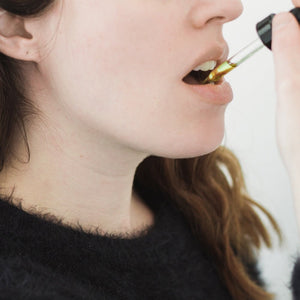
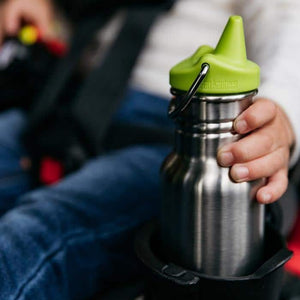
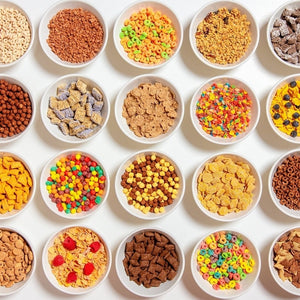
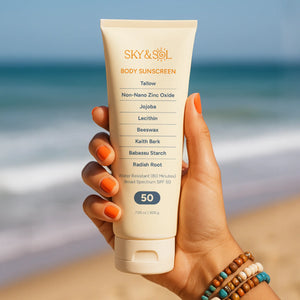

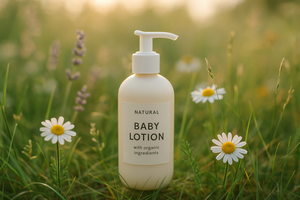

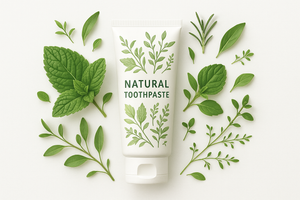
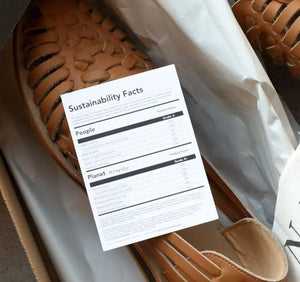


59 comments
Graham Goss
We call them Good Stuff! See above in out Good Stuff section.
Maia James
Actif is now included under Brands We Cannot Rank
Emilia
Thank you so much for updating this guide! So much has changed since I had my last baby and there are so many new options on the market that it makes my head spin. As always though, you are there to help us sort through it all!
Question about the additives. You said that Full Well would have made the “Best Stuff†category if not for the addition of magnesium stearate and silica. However, Heathynest’s prenatal also contains both of those. Why did Full Well get dinged for that and not Healthynest? I was pretty sold on Healthynest but after seeing that I wasn’t sure if I should go with Needed or PureNatal instead. Their prenatals don’t seem to contain any of those additional ingredients. Also, Healthynest seems to be a little lower in Folate. It only has 600 mcg DFE, which I believe translates to roughly 360 mcg. Although the DV does appear to be 100. Whereas Needed’s contains 551 mcg and Ritual’s (which I was previously taking) contains 600 mcg. I thought the minimum was 400 mcg, but maybe that’s wrong. Also, maybe not an issue since many of us probably get extra Folate from our diet, but curious your thoughts on that as well. Thanks!Maia James
This is an update to let you know that for this update we did follow up with the sources you recommended and it helped us gain clarity around the misleading marketing of “whole foods†supplements and the reality of synthetic versus natural isolates. Thanks again! We would love your feedback on this updated guide.
Maia James
Yes, we have a post on multivitamins on our site:)